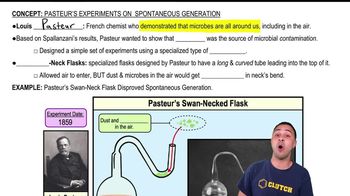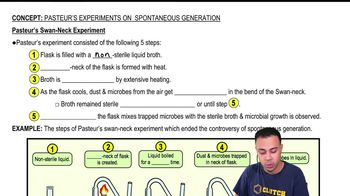Here are the essential concepts you must grasp in order to answer the question correctly.
Pasteurization
Pasteurization is a heat treatment process that aims to reduce the number of viable pathogens and spoilage microorganisms in food and beverages. Named after Louis Pasteur, this method typically involves heating the product to a specific temperature for a set period, effectively killing most harmful bacteria without compromising the food's quality. It is widely used in dairy products, juices, and canned foods to enhance safety and extend shelf life.
Recommended video:
Pasteur's Experiments on Spontaneous Generation
Sterilization
Sterilization is a process that eliminates all forms of microbial life, including bacteria, viruses, fungi, and spores. This is achieved through methods such as autoclaving, which uses high-pressure steam, or chemical sterilants. While sterilization is essential in certain medical and laboratory settings, it is often impractical for food processing due to potential changes in taste, texture, and nutritional value.
Recommended video:
Pasteur’s Swan-Neck Experiment
Food Safety
Food safety refers to the practices and measures taken to ensure that food is safe for consumption and free from harmful contaminants. Pasteurization plays a crucial role in food safety by significantly reducing the risk of foodborne illnesses caused by pathogens like Salmonella and E. coli. By lowering microbial loads, pasteurization helps protect public health while maintaining the food's sensory and nutritional qualities.
Recommended video:
Nitrate & Nitrite in Food Preservation




